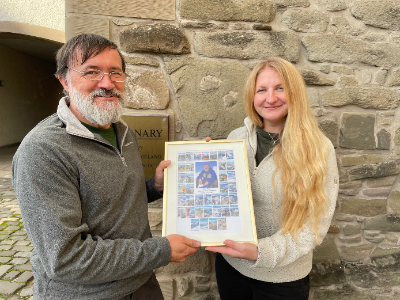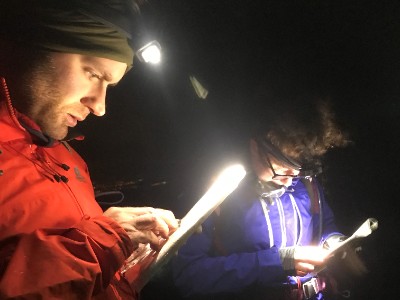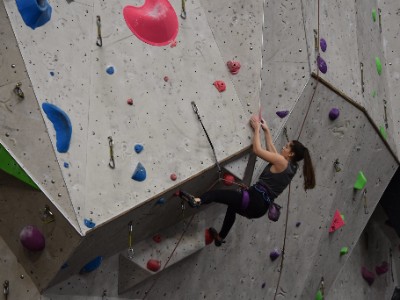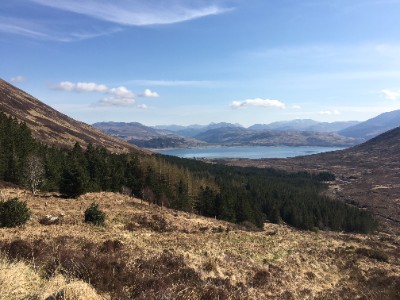Tuesday 1st November 2022, 3:20pm

October got off to a particularly busy start for our CEO Stuart Younie, with interviews taking place for the Director for Access and the Environment, and staffing changes as Fiona McNicol joined the team on the 3rd of October as our new Communications Officer. Fiona spent October working closely with Neil Reid before we said a fond farewell to him on the 28th of October, when he retired after nine years working for Mountaineering Scotland.
During the first week of the month, Stuart also held a workshop session with Access and Conservation Davie Black and two of our volunteer Directors to look at the review of our policy statement Respecting Scotland’s Mountains and the significant task of finalising the notifications and paperwork relating to the AGM, which is coming up on the 19th of November.
Later in the month, Stuart attended the first face-to-face Mountain Training Scotland Council meeting since the pandemic and heard a useful presentation on course registrations and the participant breakdown, which very closely aligns with our membership statistics. He also attended a pre-meeting with partners in advance of a meeting with the Minister for Transport on the 26th October regarding the closure of the level crossing at Dalwhinnie. Feedback from this has been encouraging and we understand from those in attendance that the Minister was very engaged in the meeting, particularly in relation to the impact of the closure on the local community.

October got off to a busy start for the Mountain Safety Team. Joined by CEO Stuart Younie, Senior Mountain Safety Advisor Ross Cadie spent a blustery day in the mountains with eBony Hikers. The online-based walking group aims to inspire, encourage and support people with Black ancestry in the UK who are interested in exploring the outdoors through walking and hiking. This was their first residential trip in Scotland and, despite some strong Scottish weather on hills that day, they are very keen to come back again soon.
Ross and fellow Mountain Safety Advisor Ben Gibson, alongside other members of the Scottish Mountaineering team, visited Stirling University to attend a Risk Communications seminar. Hosted by the university in partnership with the Scottish Avalanche Information Service (SAIS) and the Met Office, this was an informative day, and the team are looking forward to putting some of the ideas discussed into practice.
October saw the last of the summer navigation courses take place in the Arrochar Alps, which were enjoyed against a backdrop of beautiful autumnal colours. Later in the month, the first of our night navigation courses took place in the Campsie Fells. Despite an incredibly wet start to the courses, these have been very popular – one participant enjoyed it so much he even came back for a second night! The courses will now move to the Pentlands for a final three nights in November.

ClimbScotland were delighted to welcome Jack Davis to the team this month in his role as the new Talent and Pathways Officer. Jack brings seven years of experience to the role, which includes his position as Head Coach at 3 Wise Monkeys Climbing and The Castle in London. To find out more about Jack, read his bio on our Meet the Team page.
ClimbScotland’s RealRock Sessions for 2022 wrapped up at the start of October. The popular session which supports the transition from indoor to outdoor climbing for young people aged 8-17 years old will be back in 2023 so keep your eyes peeled on the website for more updates.
The latest episode of ScotRock is out now, featuring Jamie White of ClimbFree. This is a real feel-good episode, as ClimbScotland’s Robert Mackenzie hides away in a dark cupboard with one of the nicest guys in climbing. Following on from his own personal experience of mental health, he started ClimbFree to help others get back on the path to mental wellness. Jamie’s story is a roller coaster that will restore your faith in the world.
Don't forget to check out ClimbScotland’s Flickr for this month's photos from domestic comps, as well as the recent World Cup at EICA.
Access to the Glen Lyon Horseshoe has been difficult this autumn as the public car park at Invervar has been closed, with the landowner saying that there are dangerous trees there. And with the rural clearway in place preventing verge parking, the round of four Munros can only be reached by parking in the layby beyond the clearway and walking back to Invervar.
We have been expressing concerns to Perth and Kinross Council about the length of time the car park has been closed, without any alternative provision for car parking being made available. There is a health and safety issue here as daylight hours decrease and walkers must walk along a narrow, shady and unlit road. We are questioning the Council policy to impose permanent rural clearways without adequate public parking for visitors being made.

Two major overhead powerline consultations are underway: from Skye to Fort Augustus, and from Beauly to Peterhead.
The Skye upgrade project will pass through some areas of scenic and wild land and the proposed line takes in hill paths to summits as a constraint to consider, which is a welcome addition beyond the usual statutory paths. We will be pointing out that construction access tracks and their restoration will need to be done sensitively in the stretch around Glenelg and Kinlochhourn.
The Beauly – Peterhead project is at an early stage, looking at constraints to a line, stretching from the Moray Coast to the Cairngorm National Park boundary. Our interests for this one lie with the Corbetts and Grahams on the higher ground, and we were reassured that visual impact would be unlikely to be a problem as SSE Networks had a 450m contour cut-off in their route selection process.
The reason given for this filter was that land above this height is generally more sensitive to the type of development proposed, fringing the edge of the Cairngorms National Park, its open and remote nature, and the recreational value for walking and summit destinations.